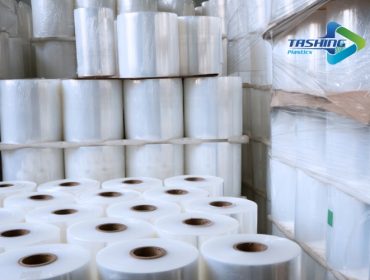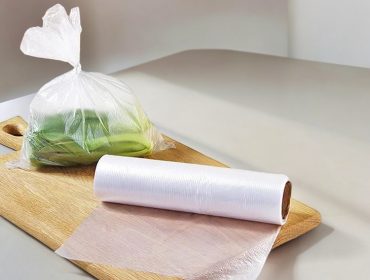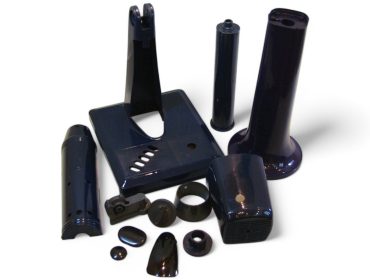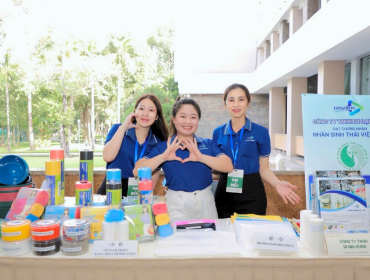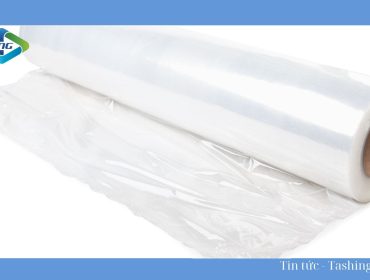The UV resistance of HDPE
22/03/2025HDPE plastic packaging is increasingly favored in various fields, from food and cosmetics packaging to chemicals and industrial products. The reasons for its widespread popularity stem from the outstanding advantages of this type of plastic, including high mechanical strength, excellent heat resistance, reasonable production costs, and, most notably, its remarkable ability to withstand UV rays. This article will delve into exploring the UV resistance of HDPE plastic packaging, analyzing its mechanisms and key applications in daily life.

Understanding HDPE Plastic Packaging and the Harmful Effects of UV Rays
Before diving into the UV resistance of HDPE plastic packaging, it’s essential to gain a deeper understanding of the nature of this packaging material and the negative impacts that UV rays can have.

HDPE (High-Density Polyethylene) plastic packaging is a thermoplastic made from the polymerization of ethylene. Thanks to its linear molecular structure and high density, HDPE boasts superior properties such as high mechanical strength, good heat resistance, flexibility, and resistance to water and chemical permeation. These advantages have made HDPE one of the most widely used plastics in packaging production.
Molecular Structure and Properties of HDPE
HDPE features a linear molecular structure, where polyethylene molecules are tightly bonded together. This bonding contributes to its high mechanical strength, impact resistance, and ability to withstand force. Additionally, HDPE is waterproof, vapor-proof, and resistant to chemicals, protecting the contents from moisture, mold, and environmental damage.
The tight molecular structure also influences its thermal properties. HDPE has a high melting point and can endure elevated temperatures without deforming or degrading. This heat resistance is crucial during production and use, especially for products that require storage or processing at high temperatures.
Effects of UV Rays on Plastic Packaging
For plastic packaging, UV rays can cause several detrimental effects, including:
- Reduced Mechanical Strength: UV rays weaken the bonds between plastic molecules, leading to decreased mechanical strength, making the material prone to cracking or deformation.
- Color Fading and Aesthetic Loss: UV rays can alter the color of the plastic, diminishing the packaging’s visual appeal.
- Reduced Product Protection: When the plastic structure weakens, its ability to protect the contents diminishes, resulting in faster product degradation and quality loss.
UV Resistance of HDPE Plastic: Mechanism and Applications
As mentioned earlier, HDPE plastic packaging possesses an impressive ability to resist UV rays. So, what mechanisms enable this capability, and how is it applied in practice?
Mechanism of UV Resistance in HDPE
HDPE (High-Density Polyethylene) is a high-density thermoplastic renowned for its durability, flexibility, and chemical resistance. However, its UV resistance is not an absolute strength.
Advantages:
- Superior UV Resistance Compared to Other Plastics: HDPE outperforms many other plastics, such as PVC, in withstanding sunlight and harsh weather conditions. This is due to its unique molecular structure, which resists degradation caused by UV rays.
- Enhanced with UV Stabilizers: To boost its UV resistance, manufacturers often add UV-stabilizing additives to HDPE during production. This enhances the longevity and durability of HDPE products exposed to direct sunlight.
Limitations:
- Not Fully UV-Proof: While HDPE resists UV rays better than many plastics, prolonged exposure can still affect it. Over years of direct sunlight, HDPE may become brittle, crack, and lose strength.
- Color Impact on UV Resistance: Darker-colored HDPE (e.g., black) absorbs more heat and UV rays, offering better UV resistance than lighter colors like white.
Thus, HDPE exhibits good UV resistance, especially when fortified with stabilizers. However, extended exposure to sunlight can still lead to degradation. For optimal durability, high-quality HDPE with additional protective measures is recommended.
During the production of HDPE plastic packaging, UV-resistant additives, known as light stabilizers, are commonly incorporated. These stabilizers absorb UV energy and convert it into heat, minimizing the rays’ impact on the plastic structure.
Common light stabilizers used in HDPE packaging production include:
- UV Absorbers: These compounds absorb UV rays and convert them into another form of energy, such as heat.
- Antioxidants: These prevent oxidation caused by UV exposure, protecting the plastic structure from weakening.
- Flame Retardants: These reduce the plastic’s flammability when exposed to UV rays.
The combination of HDPE’s tight molecular structure and UV-resistant additives gives it superior UV resistance compared to many other plastics.
Applications of HDPE Packaging in High-UV Environments
HDPE’s excellent UV resistance has led to significant applications, particularly in environments with high UV intensity:
- Agricultural Packaging: HDPE is widely used in agriculture to store seeds, fertilizers, pesticides, and other products. Its UV resistance protects contents from degradation under sunlight, ensuring quality and effectiveness.
- Outdoor Packaging: HDPE is a preferred choice for outdoor products like garden furniture, tools, and children’s toys. Its UV resistance prevents fading and brittleness, extending product lifespan and maintaining aesthetics.
- Transportation Packaging: HDPE is ideal for goods transported over long periods under sunlight, such as export items, construction materials, and packaging supplies. Its UV resistance safeguards products during transit, preserving their quality.

Superior Advantages of HDPE Packaging Compared to Other Types
Compared to other packaging materials like PP or PET, HDPE offers distinct advantages in UV resistance:
- Higher Durability: HDPE’s superior mechanical strength outperforms PP and PET, offering better protection in harsh environments.
- Better UV Resistance: HDPE surpasses PP and PET in UV resistance, maintaining product quality longer under sunlight exposure.
- Lower Production Costs: HDPE’s cost-effective production reduces packaging expenses, meeting diverse market needs.
Factors Affecting HDPE’s UV Resistance
HDPE’s UV resistance is not absolute and can be influenced by several factors:
- Packaging Thickness: Thicker HDPE packaging offers better UV resistance by absorbing more UV energy.
- Type of Light Stabilizer: Different stabilizers vary in effectiveness. High-quality stabilizers enhance UV protection and extend packaging lifespan.
- Environmental Conditions: Temperature, humidity, and UV intensity can affect stabilizer performance and HDPE’s UV resistance.
- Exposure Duration: Longer UV exposure increases the likelihood of degradation, reducing durability and causing fading.
Solutions to Enhance HDPE’s UV Resistance
Improving HDPE’s UV resistance is critical for product protection and packaging longevity. Potential solutions include:
- Using Effective Light Stabilizers: Selecting stabilizers suited to specific environmental conditions and usage requirements is key. Expert consultation can optimize stabilizer choice.
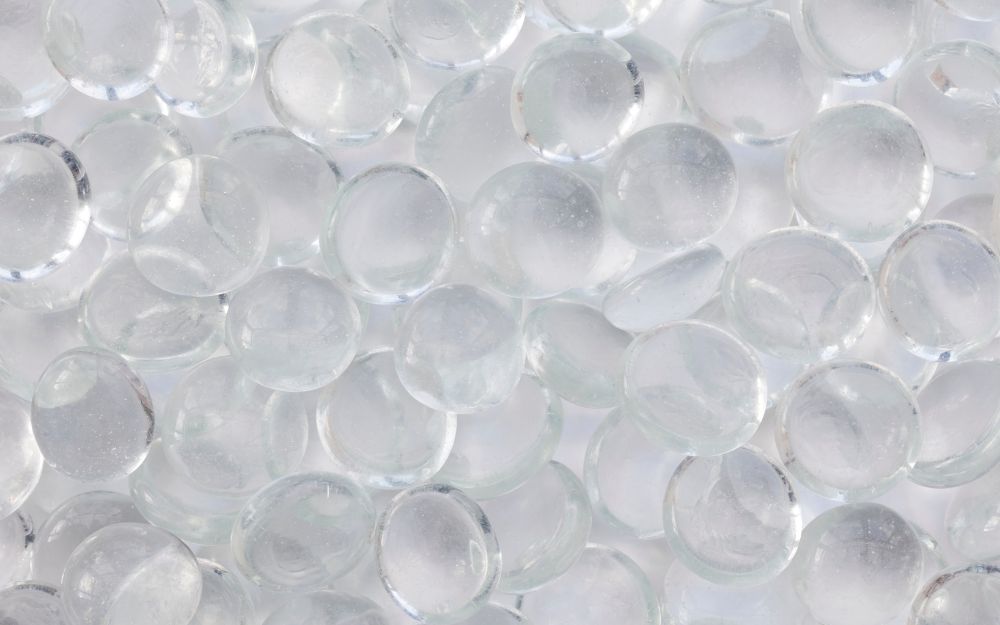
- Increasing Thickness: Thicker HDPE absorbs more UV energy, enhancing protection.
- Surface Coating Technology: Applying UV-resistant coatings (e.g., TiO2, ZnO) reflects or absorbs UV rays, bolstering protection.
- Surface Treatment Techniques: Methods like corona or plasma treatment improve surface UV resistance, extending packaging life.
Conclusion
HDPE plastic packaging, with its unique molecular structure and compatibility with UV-resistant additives, has solidified its role in the packaging industry, particularly for applications requiring high UV resistance. Its superior UV resistance plays a vital role in protecting products, maintaining quality, and extending lifespan in harsh environments. A deeper understanding of its UV resistance mechanisms, influencing factors, and enhancement solutions allows us to fully leverage HDPE’s advantages, improving product quality and meeting market demands effectively.
Di Dai Hung – High-Quality HDPE Packaging Manufacturer
With over 40 years of experience in plastic packaging production, Di Dai Hung Co., Ltd. proudly stands as a trusted partner for businesses domestically and internationally. We specialize in providing high-quality HDPE packaging, manufactured with proprietary formulas to suit diverse usage conditions, including:
- Outdoor packaging
- Industrial product packaging
- Anti-static HDPE packaging
- Packaging for food and equipment
With superior production capacity, our factory can produce plastic film rolls up to 4 meters wide, achieving a monthly output of 400 tons, ensuring timely delivery and top quality for all orders.
OFFICE
Address: 462 & 466 Hong Bang, Ward 16, District 11, Ho Chi Minh City
Phone: 028 3960 5688 – 028 3960 5800
Email: info@tashing.com.vn
Facebook: Di Dai Hung Co., Ltd.
FACTORY
Address: 62G An Duong Vuong, Ward 16, District 8, Ho Chi Minh City



